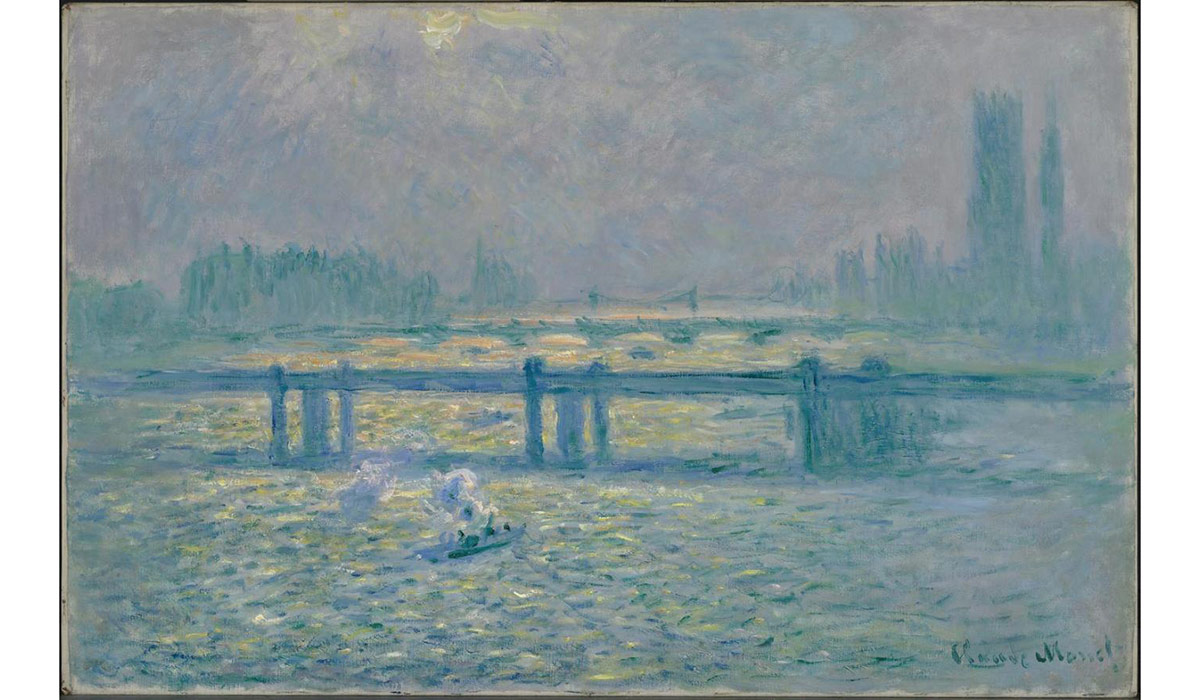The Baltimore Museum of Art Aims a Wrecking Ball — at Itself
The Baltimore Museum of Art announced last week that it is studying ways to “reimagine the structure and function of a museum, considering what form a museum would take if an institution was reconceived from scratch.” It’s gotten $150,000 from the Mellon Foundation. There’s a new committee leading the charge. I hope it’s a charge to nowhere.
It’s a “multi-year research and planning project.” In my previous iteration — many years in political life — “multi-year research and planning project” was listed as the cause of death in the obituary of an idea someone important liked but no one else did. The no one elses thought it politically necessary to appoint a blue-ribbon committee to escort the unsuspecting corpse-of-an-idea to oblivion.
Let’s hope that the Mellon Foundation’s $150,000 is the funeral’s price tag, a hefty one for sure, but a funeral nonetheless. And let’s pray that the BMA buries its frantic, delusional crack at making the museum a social-justice juggernaut.
“We have not achieved the radical change we know to be necessary,” Christopher Bedford, the director, tells us. “Museums are failing to reflect, embrace, and serve a diverse public.” Bedford has been on a mission since he became the director in 2016. Under his rule, the museum sold millions of dollars in dead-white-man art to buy art by African Americans and women. This is fine with me, and the trustees’ prerogative. I think the museum is wrong, though, to buy overpriced work by famous black and women artists when it should buy work by younger artists, which is cheap and cutting-edge and builds careers.
Bedford spectacularly failed earlier this year in his attempt to sell about $60 million in art to finance a crazy “equity” initiative. He tried to use a loophole relaxing the museum profession’s rule against selling art for operating expenses, a loophole aimed at easing revenue losses from the COVID crisis and helping museums that are genuinely broke. Pissed trustees, big donors, and former BMA directors rebelled. The day before the Sotheby’s auction, the BMA board and Bedford, humiliated, nixed the sale.

Left: Woman with Mango, 1892, by Paul Gauguin. Oil on canvas.
Right: The Violoncellist Schneklud, 1894, by Paul Gauguin. Oil on canvas. (Public domain/via Wikimedia)
I heard that the trustees are examining what went wrong. I can tell them, by the way.
Now the poor, beleaguered BMA community faces another stab at radical transformation. Why do people believe that radical transformation — remaking something from scratch — always infers change for the better? Change can make things worse, too.
I like the museum a lot, and I like Baltimore. The BMA has a superb collection of French Modernism. It’s encyclopedic, with great things from every era. The BMA is one of the best big-city museums in the country. It’s an art museum, though, not a community center, not a church leading us sinners to PC paradise, and not, let’s resolve, a plaything for privileged, guilty white liberals.

Who is on this new committee? I google everyone I don’t know these days. Keondra Prier is the project manager. She was the education director at the Walters Art Museum in Baltimore for three years and has jumped from job to job. She was once an actress and model. Now she’s a consultant. George Ciscle was the director of the MFA program at the Maryland Institute College of Art, one of the best art schools in the country, and he founded the Contemporary, the Baltimore art space that did contemporary art shows when the BMA wouldn’t. Adam Holofcener is a sound artist. His work “engages with white privilege,” about which much sound is expended, all specious rattle. He runs the local volunteer-lawyers-for-the-arts group, a very good cause.
Omar Eaton-Martinez works for the historical-house-museum department of Maryland’s Prince George’s County. Kennedy McDaniel is a freelance grant writer working with nonprofits. Antoinette Peele and Jess Solomon are management consultants focusing on nonprofits. Lu Zhang is an artist, researcher, and organizer.
The in-house coordinator of the project is Gamynne Guillotte, the BMA’s head of “strategy and realization of interpretive projects, educational resources, public programs, and visitor engagement.” Fancy title for a high-paid museum bureaucrat. The BMA has too many people with the words “strategy” and “innovation” in their titles.
All are African American but for Ciscle, Holofcener, and Lu. This decidedly un-diverse committee is very heavy on nonprofit consultants. They’ll join anything that gives them exposure. Artists with higher profiles probably said no. No one on the committee owns a business that actually makes things. There’s no art historian. Silly me, but I’ll ask, Is there anyone from the suburbs? The museum soon-to-be-reconceived-from-scratch serves Baltimore’s suburbs, not all of which are rich. Ciscle is the only member I’d call a heavyweight. I like Chris Bedford. He’s a charismatic, smart guy who resurrected the Rose Art Museum at Brandeis from an assassination plot worthy of Julius Caesar.
He curated the Mark Bradford show for the American pavilion at the Venice Biennale. It was the best American offering I’ve seen and, for the American pavilion, it’s been mostly downhill ever since then.
Obviously, Bedford wants to transform the world, starting at the Baltimore Museum of Art, but the trustees need to tell him that the museum is one of the few institutions in Baltimore that actually functions well. Baltimore is the most screwed-up city in America, beating New Orleans, whose levees, at least, held after Hurricane Ida. So far, this month alone, there’s been 30 murders in Baltimore, all, I believe, black-on-black killings. As horrifying as this is — and this kind of violence is among Baltimore’s biggest, most intractable woes — the BMA has next to nothing in its quiver to help. Six hundred Matisses are only so elastic.
Of the museum, Bedford tells us that there are “requirements it needs to fulfill to truly be situated in the cultural and social fabric of its city.” I’m bothered by this for many reasons. First, Bedford’s not from Baltimore. He’s from Scotland. I don’t think he even lives in Baltimore. Second, the BMA is the city’s and the region’s big civic museum, which means it’s not only already in the cultural and social fabric of the city, it’s also the star attraction, along with Johns Hopkins, the Walters Museum, and the Roman Catholic bishopric. Baltimore is home to more than one demographic.
The BMA is an art museum. It does art. Within those confines, it can and already does mount exhibitions on lots of subjects. It shows lots of different art. Its current and upcoming exhibitions look very good. They’re wide-ranging and appealing, I think, to many interests. I don’t know what it paid for the new art it bought — probably a lot and surely too much — but it hasn’t bought anything that’s bad.
I’m against race-based hiring and think a museum should employ the best-qualified people it can find, but if Bedford and the trustees want a workforce that reflects the demographics of Baltimore, that’s something they can achieve now, without “reconceiving the museum from scratch.” The trustees can rectify unfair pay, promotion, and evaluation practices, too. As I wrote earlier this year, the BMA doesn’t need to sell $60 million in art to do any of this.

I’m wondering whether this “reconceiving the museum from scratch” crap is a sop to Bedford, letting him play the part of a utopian while preserving the status quo. You’d think, after the Sotheby’s debacle, the trustees would look at further adventures with chagrin. I don’t understand the bourgeois trot mind, though, and I think such people are on the board in greater numbers than I imagine.
Being a playful spirit, I thought about what, logically, would happen to the BMA if it were disassembled and remade. Those 600 Matisses? Wouldn’t half a dozen do? Fifty horse pictures? I can’t think of anything more elitist than that. Antioch mosaics? Tiffany lamps? Fancy silver from Baltimore? Is any of this relevant to today’s Baltimore? Shouldn’t it all be sold? That’s starting from scratch. Should the BMA sell its intimidating pile-of-a-temple building and do the pop-up art-space thing?
Shouldn’t the board reflect the demographics of Baltimore? That’s 63 percent African-American. That’s a mean income of $75,000. You want equity? That’s your yardstick.
Baltimore’s a Big Government town. Should the BMA be socialized, becoming a city-owned museum? Kiss your endowment goodbye, then. The city will take it and blow it in five minutes. It’s not only the worst-run city in America. It’s also one of the most corrupt. Wouldn’t it be great to see the BMA run with the same high standards as Baltimore’s public schools? Now, that’s radical.
Let’s get real. I’d suggest telling the Mellon Foundation, “Thanks, but no thanks” and returning its $150,000 check. I’d propose disbanding this new committee, saving everyone the many hours of talk and meetings that will surely come to naught. The BMA’s director wants to play the radical, but that’s not what directors of old, distinguished museums do. If that’s boring, he should try being a TV evangelist or forming a start-up contemporary-art space. And those trustees sitting quietly and anxiously at meetings, afraid to speak up, should cry, “Basta!” Stop trying to wreck a good thing, and the BMA is a very good thing indeed.